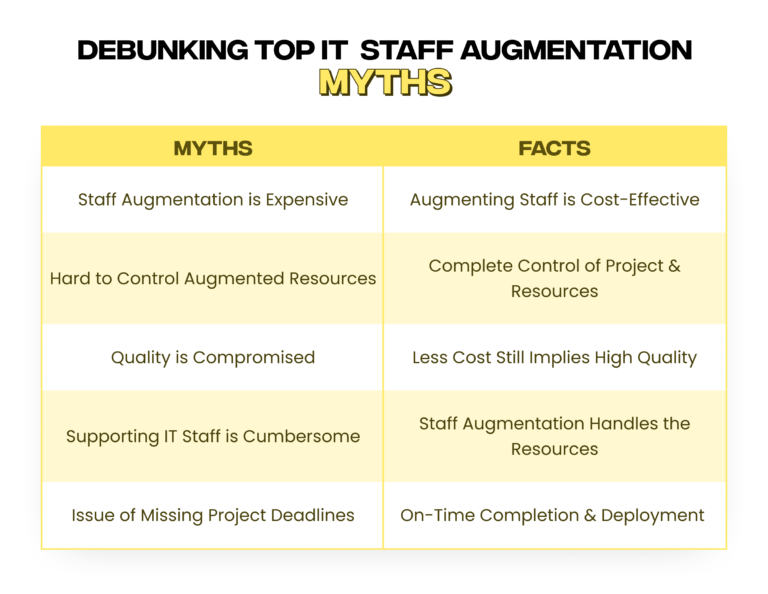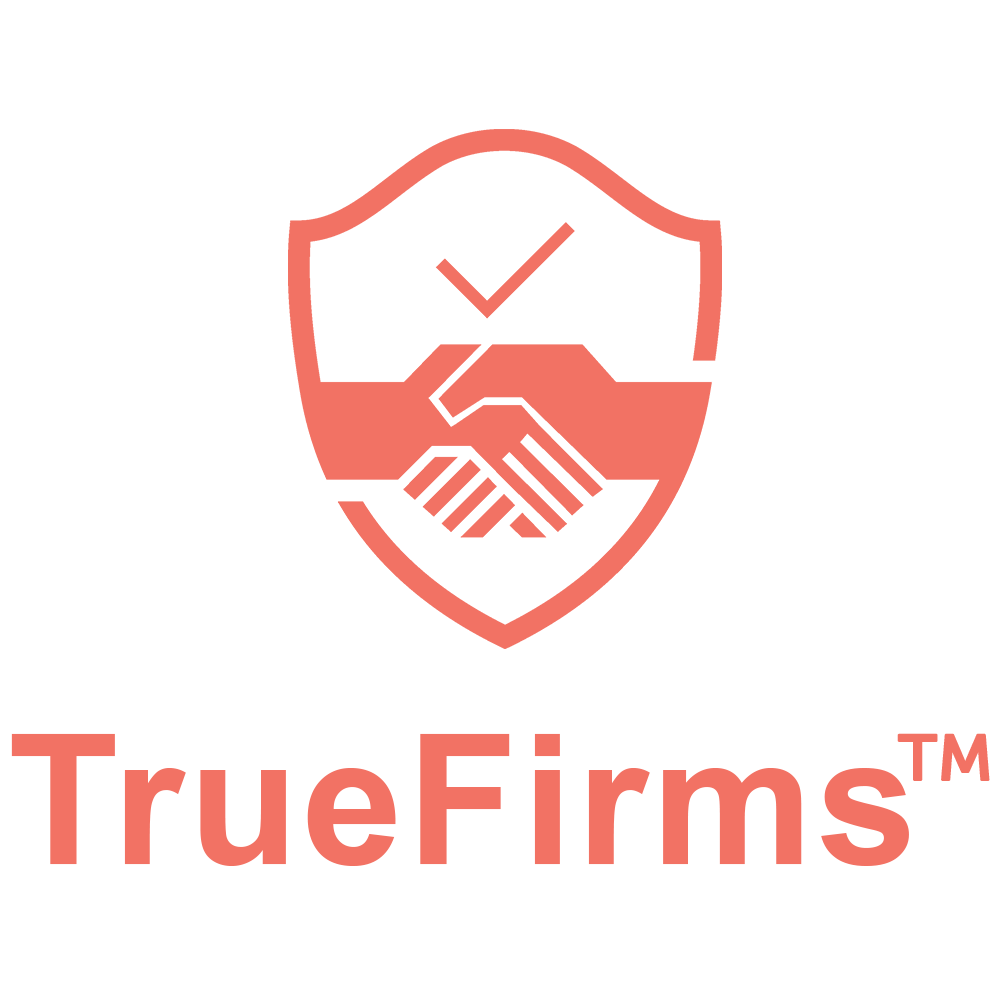Debunking 5 Myths of Staff Augmentation Services

Staff augmentation has become a popular choice for businesses looking to bolster their teams with specialized skills without the long-term commitment of hiring full-time employees. Despite their widespread adoption, there are several misconceptions surrounding staff augmentation services that need to be debunked. In this blog, we will explore and dismantle five common myths associated with staff augmentation.

- Staff Augmentation Is Costly
One prevalent misconception about staff augmentation is that it is an expensive option compared to hiring full-time employees. In reality, it can be cost-effective. Businesses tap into a global talent pool, choosing resources based on project requirements and budget constraints. By avoiding costs like benefits and onboarding, companies can achieve significant savings without compromising quality.
- Management & Communication-Related Issues
Skeptics argue that staff augmentation leads to management and communication challenges due to the remote nature of augmented team members. However, advancements in communication technologies have made effective collaboration with remote teams easier. Project management tools and real-time communication platforms ensure remote team members are well-integrated.
- Less Control Over The Projects
Another misconception is that businesses have less control over projects when using staff augmentation services. On the contrary, companies maintain control over the project’s direction, timelines, and deliverables. Staff augmentation providers work closely with clients to understand their requirements, ensuring a collaborative approach that aligns with the client’s goals and standards.
- Time & Cultural Differences
Concerns about time zone differences and cultural disparities are often raised when considering staff augmentation. While distributed teams may span different time zones and cultures, this diversity can be leveraged as a strength. With proper planning and communication strategies, businesses can turn time zone differences into an advantage, achieving round-the-clock productivity.
- Low-Quality Development
A common myth surrounding staff augmentation is that it leads to low-quality development work. However, project success depends on factors such as the selection of skilled professionals, clear communication, and effective management. Reputable staff augmentation service providers carefully vet their talent pool, mitigating the risk of subpar development work.
Top Staff Augmentation Benefits
Once we’ve dispelled the myths surrounding staff augmentation, it’s crucial to shed light on the myriad benefits it brings to businesses. Beyond cost savings, staff augmentation provides unparalleled flexibility in scaling teams, allowing companies to adapt swiftly to changing project demands. It becomes easy to access specialist expertise, ensuring that projects are managed by subject-matter experts in certain fields. This strategic approach not only enhances project efficiency but also propels businesses to thrive in dynamic environments. With the ability to assemble a tailor-made team for each project, staff augmentation becomes a catalyst for innovation, bringing
Concluding Thoughts
In conclusion, staff augmentation is a valuable strategy for businesses seeking to enhance their teams with specific skills and expertise. By debunking these common myths, we hope to provide a clearer understanding of the benefits and advantages that staff augmentation services bring to the table.
Frequently Asked Questions
- Is staff augmentation suitable for all types of projects?
- Staff augmentation can be beneficial for a wide range of projects, but its suitability depends on factors like project complexity, duration, and specific skill requirements.
- How can businesses ensure effective communication with remote team members?
- Utilizing project management tools, video conferencing, and establishing clear communication channels are key to fostering effective collaboration with remote team members.
- What steps can businesses take to address time zone and cultural differences in distributed teams?
- Planning work schedules that accommodate different time zones and promoting a culture of diversity and inclusion can help businesses navigate time zones and cultural differences within distributed teams.
Read More
Why Staff Augmentation Is A Game-Changer For Startups in 2024











